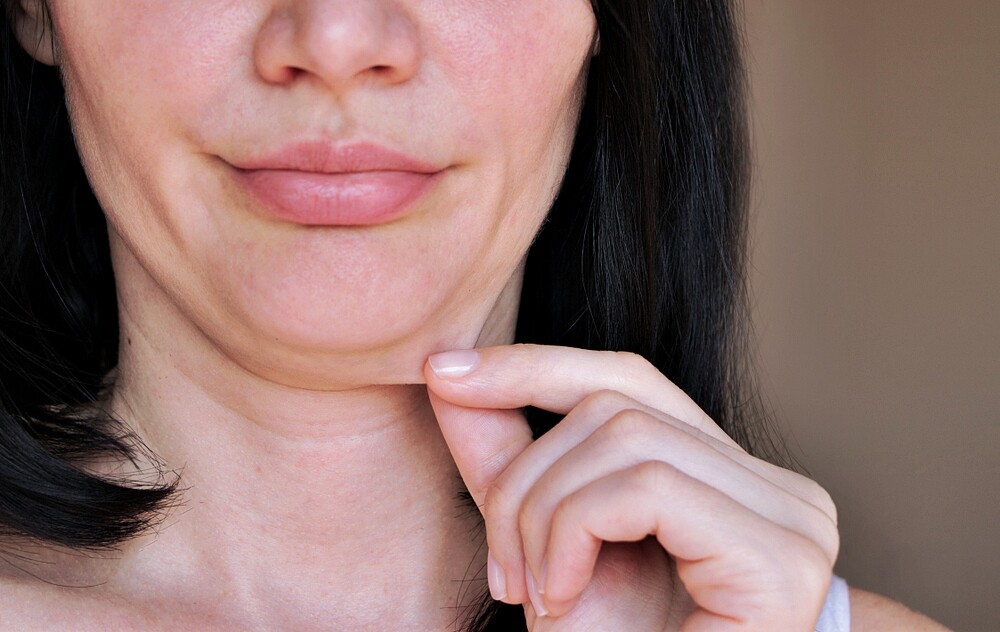Thin skin on your face? How the so-called parchment skin develops and what you can do about it, you can find out here.
How thin skin develops
The texture of our skin does not (unfortunately) remain identical throughout our lives. Especially the area around the cheeks and the nose is very susceptible to thin skin, also known as parchment skin.
But how does it come to this? First and foremost, the development of parchment skin is due to our natural aging process. The following causes can be the trigger:
- Lack of moisture (reduced production of hyaluronic acid)
- Reduced formation of collagen, elastin
- Hormonal changes
- Slower metabolism
- Too much influence of the sun on the skin
- Poor air
- Tobacco and alcohol consumption
- Diseases of the liver or diabetes
By the way: The aging process is usually first visible in the face. But the area around the neck, hands, feet and legs is not immune to parchment skin either. A good day cream provides moisture and protects the face from rapid aging.
Symptoms of thin skin
You’re not sure if you already suffer from parchment skin? You can identify thin skin especially when “pinching” it, because for a short time a wrinkle is created. Often small veins are accompanied by thin skin. This is because the skin is thinner in its coating, so that veins and co. appear more prominent.
Ageing processes of the skin
- From about 30 years old: The skin begins to produce less moisture, first lines on the forehead or eye wrinkles form.
- From about 40 years old: the skin loses more elasticity and firmness. In addition, the aging process also leads to a longer regeneration of the skin, for example even after the consumption of alcohol.
- From about 50 years old: Now the parchment skin slowly becomes more noticeable. The first pigment spots (age-related) may also appear on the face or hands.
- From about 60 years old: From redness to small veins, the thin skin now holds many surprises in store. The depth of wrinkles and the loss of elasticity of the skin are known to many people over 60.
- From about 70 years old: At this age, the skin renews itself much more slowly and is therefore more susceptible to external stimuli. Wound healing now takes considerably more time.
Thin skin: Disease?
Even if dry, thinning skin usually has natural causes, diseases can also be hidden behind the changed skin texture or trigger them. For example, if bruising occurs because the thin blood vessels tear or the skin tends to tear even with slight rubbing, a doctor should always be consulted.
Thin skin: 4 tips against thin skin
- Nutrition: A balanced diet with plenty of water and little alcohol is a good basis to prevent parchment skin. Especially the intake of vitamins and minerals is essential. If you have problems covering your vitamin requirements, you can take high-quality vitamin C or even vitamin D, which is so important especially in winter, via food supplements.
- Sleep: Sleep gives the skin the urgently needed time to regenerate. It is therefore important that you get enough sleep, usually 7 to 8 hours per night. But every person has an individual sleep rhythm. You are the one who knows best when you feel fit and when you feel tired. By the way: putting some lavender on your pillow relaxes you immensely and makes you sleep better.
- Sun: The UV radiation of the sun attacks the elastic fibres of our skin. This leads to skin aging and possibly also to diseases. Do not lie in the blazing sun and always use a high-quality sunscreen with a high sun protection factor to protect yourself and your skin.
- Care: Thorough facial care helps to ensure that your skin receives sufficient moisture and is not burdened with make-up residue. Especially care products with vitamin E accelerate the regeneration of the skin and bind the moisture.

